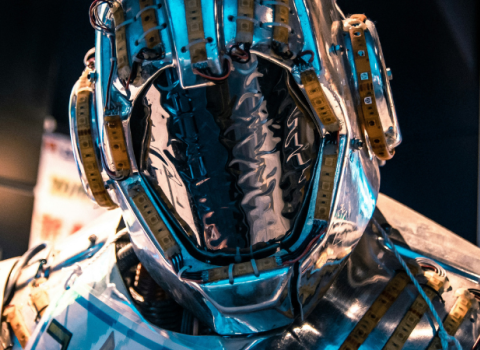
Green competitor Mats Williander. Picture Elin Williander.
Environmental problems, their causes and their consequences are of growing concern these days for all of us. Not a single week passes without alarming news in the media about melting ice, flooding, heatwaves and so on. Despite more and deeper eco-environmental concerns, almost nothing happens: our collective ability or willingness to react and make the required corrective adjustments seems close to zero.
How can this be? Most of us are not destructive. We care about the environment and we want our kids to have a prosperous future. Then why is progress so slow?
The greening of industry is basically about limiting and avoiding overuse of common resources, whether sources or sinks – that is to say, it is an issue of dealing with a common wrong, and it is a systemic problem.
First, it is a knowledge problem. Dealing with a common “bad” requires knowledge about what it is that is bad. Such knowledge is not always readily available. Society tends to learn about these issues through observations, which means that the knowledge of what is bad is not available until a sufficient amount of what is ill has been produced and has had time to create an effect that can be observed. The time between initial production of the “bad” and validated knowledge that the “bad” really is wrong can be several decades.
Secondly, there is a lock-in problem. While society unconsciously awaits knowledge on the issue, the production of the “bad” continues. Since it is a by-product from producing goods that consumers want to pay for, money is invested, production is scaled up, technology is chosen and becomes dominant, competitors establish themselves, customer preferences are formed, the market grows and the product establishes its role in society. Technology and organisations are mirroring each other more and more on both meso and macro levels in society. This whole development tends to create lock-in effects.
Thirdly, there is the tragedy of the commons [1]. The continuous striving for each and every firm in industry to stay competitive or improve competitiveness is shown by a continuous effort to deliver improved “good” to the paying customer. Initially, the production of “bad” is an unconscious but interdependent by-product from the produced private good. The interdependency between the produced private good and produced common bad creates reluctance against any voluntary reduction of the “bad” once it has been identified as being bad. Every firm will pursue its own best interest, which means that if there is any cost associated with reduction of the common bad, no one will voluntarily reduce it.
The tragedy of the commons also applies to consumers. If “bad” can be reduced only at a cost for the paying consumer, each individual in the collective of consumers sees limited reasons to make voluntary personal sacrifices. Since greening of industry has to take place in a world of commons, it hence seems appropriate to expect that in order to become accepted, attractive and used, more eco-benign product offerings must provide personal value to the payer.
An important factor in resolving the systemic problem in the greening of industry is the assumption that mankind is not destructive in character, although possibly selfish. Consumer research shows that most consumers would choose a more eco-benign product alternative, given that all other attributes, including price, are the same [2]. This means that although the tragedy of the commons is present and personal sacrifices should not be expected (selfishness is omnipresent), the private consumer does appreciate reduction of “common bad” in products.
Another important factor in resolving the systemic problem is the notion of “private good”. Since “good” is not factual but normative, it can also be influenced. Products play a much bigger role in contemporary society – especially in high-involvement consumption [3, 4-6] – than just providing a utility function. What a consumer wants depends on what other consumers want: the relation is not between the consumer and the product but between the consumer, the product and other consumers [3]. Most consumers do not want to stand for something that is broadly considered as bad [2, 7]. The firm that provides products that perform better from a public point of view, while simultaneously performing better from a private point of view, improves the social fit for the customer, the product and the firm, and this is very competitive.
There is, however, mounting evidence among firms that the way they currently innovate is not sufficient. The technical “single-minded” innovation is a simultaneous solution to both the needed improvement of the private good and the commercial issue of getting paid. Such “single-mindedness”, however, is not sufficient in green innovations. Here, the technical solution must primarily be a solution to the eco-environmental problem, though a “single-minded” eco-environmental innovation will generally lead to commercial failure. The innovation process must be designed differently and continue beyond the technical solution to the eco-environmental issue, while also specifically addressing the commercial problem of getting paid. It is about the ability to create inseparably common good and private good.
To address the environmental problem and the commercial problem simultaneously is about innovating differently. It requires an organisational aspiration to exploit new technology – not least because by-products from the existing technology are often what is the causing eco-environmental problem.
Companies’ existing competence is insufficient. It needs competence in the environmental problems to be solved, attractive technologies that can solve them, and – not least a broader understanding of the consumers, so that the innovation becomes attractive for them. Since the required set of competences rarely can be found within the established firm, one solution is to innovate in competence networks beyond organisational boundaries, involving the necessary expertise wherever this may be. Surprisingly, though, the key obstacle is the senior management of established firms, who seem rather uninformed about the eco-environmental challenge but even more surprisingly, uninformed too about the substantial business opportunity in going green, "one of the biggest business opportunities in the history of commerce" [8:25].
Mats Williander currently works as business strategy manager at Volvo Car Corp. He has over 26 years of business experience from multiple businesses and positions, mainly within the areas R&D and business management. He holds a MScEE from Chalmers University of Technology, an MBA from the University of Gothenburg and a PhD in Technology Management with a focus on Green Innovation Inertia from Chalmers University of Technology.





 A unique international forum for public research organisations and companies to connect their external engagement with strategic interests around their R&D system.
A unique international forum for public research organisations and companies to connect their external engagement with strategic interests around their R&D system.